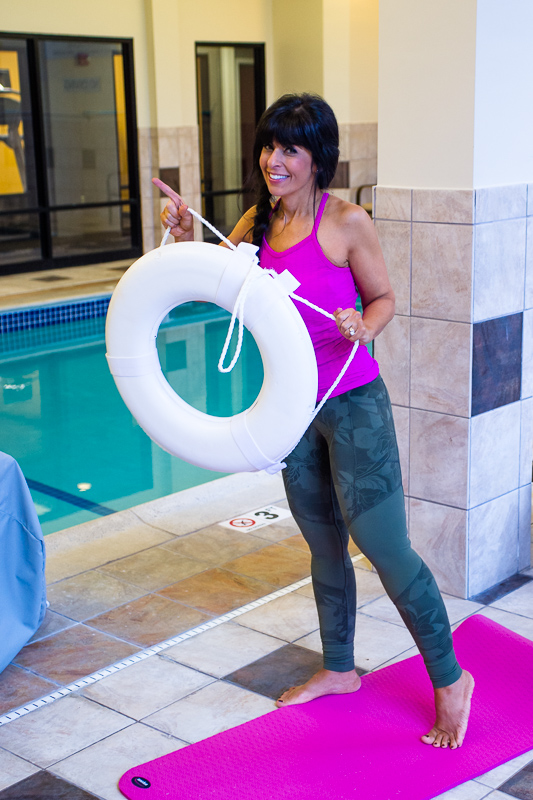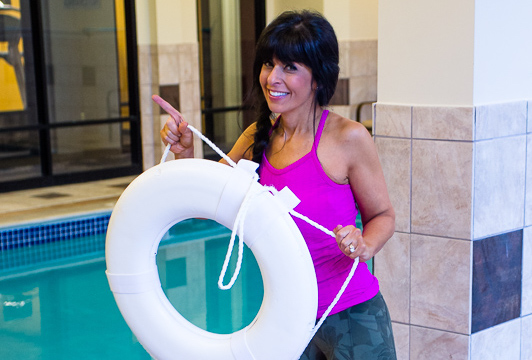Over the years of watching the news on television with my mother, I’ve learned a great deal about safety from her commentary on the misfortunes of others. My mom will tell you that the girl who was attacked during a night out when she was with friends, didn’t have good friends. Good friends know that, if you go somewhere together, you leave together, and you watch out for each other in between. If a person is reported missing, mom is certain that they didn’t tell their own mother where they were going, who they were going with, and what time they were coming back. Carjacking? She’d remind me, “How many times have I told you to lock your car the minute you get in?”
I’m not saying that my mom wasn’t right, as mothers usually are, but I thought there might be some other ways to stay ahead of trouble beyond her warnings of what not to do. With this in mind, I took a self-defense class for women and sought out some helpful tips from safety experts:
-
- Pay attention! Gary Meyer, owner of Elite Freestyle Karate Centers, advises that you should always be aware of your surroundings. “Walk with PURPOSE. Show confidence in your posture and always appear like you know exactly where you are and where you are going,” Meyer stresses. If you’re fishing around your handbag looking for car keys, distracted by your phone, or fumbling with shopping bags, you’re a far easier target that can be taken by surprise. Meyer also cautions people to look under their vehicles as they’re approaching and to check the back seats. Once in your vehicle, lock the doors and promptly depart the area.
- Have a plan! Scott Carriere, a former Deputy Chief with the Peabody, Massachusetts Police Department, graduate of the FBI National Academy and experienced director in the field of private security as well as the current managing partner of Firearms Advanced Simulations Training & Consulting, stresses the importance of “mental conditioning” and recommends playing out different scenarios that could result in confrontation. It might sound excessive, but Carriere stresses that anticipating and planning for any scenario is by far the best way to avoid getting into trouble in the first place. Create a plan and then be prepared to execute your response. While considering the various types of criminal encounters, keep in mind what your response options will include, whether it be to comply and be passive, to call attention to the confrontation in order to obtain help, to flee, or to fight. If you imagine being confronted with a robbery situation, for example, and the threat is serious but seems that the goal is just to rob you, compliance may be the best and safest response. Carriere suggests carrying a small amount of cash (e.g. a $5.00 bill over a bunch of $1.00 bills to make it appear substantial) and to have that in a separate area to be able to quickly hand it over and diffuse the situation. In the worst-case scenario, if you think you are at risk of being abducted, do everything in your power to either get away or fight back— that’s your best chance for survival.
- Be prepared! Marcel Haddad, a retired Federal Law Enforcement Officer with over thirty years’ experience and Massachusetts State Police Instructor and safety expert, also with Firearms Advanced Simulation Training, suggests there are many tools that can help you thwart an attack. Haddad tells students during self-defense and weapons training classes that personal sirens can sound an alarm to alert others of distress and cause unwanted attention. He also demonstrated that there are pepper sprays that are as discreet as a pen or lipstick container. Haddad cautioned that many people are walking or jogging using earbuds to listen to music on their phones and the volume is turned up so loud that they wouldn’t be able to hear an attacker coming at them from behind or a car skidding out of control towards them. He suggests you have your phone at the ready, but to call for help rather than distracting you from harm headed in your direction. If you are listening to music, keep the volume at a level that still allows you to be aware of what’s going on around you.

Marcel Haddad teaching a firearms safety course at Firearms Advanced Simulation Training & Consulting in Wakefield, Massachusetts.
- Trust your instincts! “Use your senses and trust your gut!” is advice Meyer gives his karate students. If you feel something isn’t right, it probably isn’t! If you feel like someone is following you, then do not go straight home. Instead, try to drive or walk to a police station or, if that’s not possible, a very public place like a busy shopping plaza.
- Don’t be a creature of habit! We all have our daily routines, but Field Service Division Patrol Officer, Guy Champa, cautions that predictability can you put at a great disadvantage against a would-be assailant. Champa recommends leaving at different times, taking different routes to work or school, and even take your daily walk or run at different times and locations. Champa went on to advise that, in a world of constant communication, “Don’t tell everyone your business…especially online!” If you’re checking in on social media in real time, you’re letting everyone, including criminals, know where you are and where you’re not! Even celebrities can be a victim of this as Kim Kardashian and Paris Hilton were both sensationally burgled as a result of posting too much information on their social media accounts.
- Don’t be fooled! There are a lot of decent people in the world and sadly criminals use this fact to their advantage by pretending to be someone in distress. Whether someone is broken down on the side of the road, bumps into you in a car accident scenario, or appears hurt, Champa warns that you should always call for help. This was famously demonstrated in the scene in the movie The Silence of the Lambs, where the young woman attempts to assist a man putting a sofa into a van by himself and is subsequently abducted. Use extreme caution if you’re stepping into a situation to assist someone that could really be putting you in a vulnerable position.
- Know what to do! Taking even a single self-defense class that can teach you simple tactics to respond to someone physically threatening you. While interviewing Carriere and Haddad, I was given a 45-minute self-defense session that demonstrated what to do if someone was choking me, pulling me by my hair, or grabbing my arm or wrist. Haddad showed me how to use key pressure points to defend myself if my attacker was physically stronger than I was. I was taught techniques on boxing someone’s ears, applying a fast chop action to the throat, and deflecting a strike from my attacker. Meyer also recommended taking a self-defense class, stating that it not only could it save your life, but “it’s also great exercise, fun and boosts your confidence and ability to protect yourself!”
So, with some sage advice from the experts (and my mom!), you can safely avoid being a cautionary tale on the news where my mother will tell me where you went wrong.

Photo by Dana Lane Photography
Hair and Makeup by Janeen Jones Hair & Makeup




